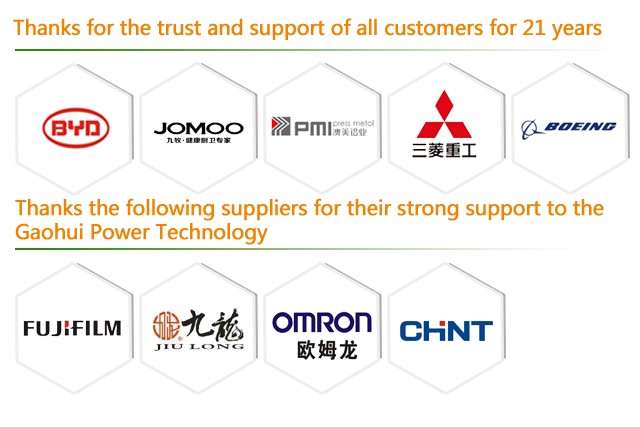Technical requirements for anodizing and dyeing black
Anodic oxidation equipment dyeing technology points for peer reference
Design and manufacture of 1 clamping fixture
Characteristics of 1.1 clamping fixture
The jig used for anodic oxidation is completely different from that used in electroplating. It is not appropriate if the clamp is used as an anode for electroplating. When the anode oxidation, the fixture and the workpiece surface will produce an oxide film. In this process, a little loosening of the fixture and the workpiece will change the contact position and impede the circulation of the current. It is necessary to use flexible clamps to clamp the workpiece in order to make the anodizing process normal.
The structural form of the 1.2 clamping fixture
The fixture structure is a good individual. If the assembly is used, the riveting or welding place will be loosened by corrosion after several use, which hinders the normal circulation of the current during the anodic oxidation process. At the same time, the fixture must have a certain cross section area. The fixture of a certain section also has enough elastic and clamping force to keep the workpiece and fixture in good contact with the clamp, so as to ensure the normal circulation of the current when the workpiece is anodized. Avoid burning the workpiece due to poor heat generated by contact. 0000.jpg
Selection of 1.3 clamping fixture materials
Make jig to choose hard aluminum material, rigid aluminum has good elasticity, fastness and durability.
2 clamping workpiece clamping
2.1 for cleaning the film to the fixture
In the anodizing process, the fixture also produces oxide film. For this reason, the oxide film must be removed before the used fixture is used again. The retreating film can be carried out in the oil removal solution of aluminum. The oxide film of the contact part between the fixture and the workpiece can also be filed with a file. This method can extend the service life of the fixture for some fixtures.
Selection of the position of 2.2 clamping clamp
The position of the clamping workpiece should be properly chosen and should be clamped on the side surface of the workpiece (i.e. the part not decorated). Otherwise, the contact parts of the workpiece and the fixture can not produce the oxide film because of the clamping of the fixture. Of course, the color can not be dyed. The obvious white spots will appear here, which affects the appearance quality. In addition, the problem of whether or not the concave part suspended in the solution after the workpiece is clamped should be considered.
2.3 to prevent workpiece clamping deformation
The clamp is not the same as the hanger, and the clamp has a certain elasticity. It is important to note that when the workpiece is deformed, the deformation of the workpiece should be avoided by excessive force.
2.4 to prevent loose fitting
When the workpiece is loose, the current between the fixture and the workpiece will break when it is broken. In this case, it is likely to burn the workpiece.
2.5 anode one by one for dyed anodized parts
Some units use some window dressing or some other methods to bind some small pieces for anodizing. Although this method can save time and increase efficiency on a certain occasion, it can only be used in some non - high quality anodic oxidation. Even if a small amount of workpiece can not produce an oxide film at each other's cover, it is not easy to be identified. However, it is obviously not advisable to adopt such a clamping method for black workpiece. It must be clamped one by one to ensure the quality of anodic oxidation.
Control of 3 technological conditions for anodic oxidation
The relationship between the temperature and the voltage of the 3.1 solution
The lower the temperature of the solution at the rated range, the higher the required voltage, the slower the formation of the oxide film when the solution temperature is low, and the denser layer of the film. For the oxide film of a certain thickness, the anode oxidation process needs to increase the voltage. When the temperature of the solution is high, the dissolution rate of the oxide film is added and the formation of the oxide film is loose, and the quality of the oxide film can be improved by reducing the voltage.
Relationship between temperature and time of 3.2 anode anodizing solution
The lower the temperature of the solution, the longer the anodization time is required. Because the temperature of the solution is low, the formation rate of the oxide film is slow. When the temperature of solution increases, the formation rate of oxide film is accelerated. At this time, the anodic oxidation time should be shortened, otherwise the coating will be dissolved due to the increase of the outer layer resistance of the oxide film, the change of the size of the workpiece and the phenomenon of the surface roughness of the surface.
The above measures are only emergency measures taken under conditions of neither cooling equipment nor heating device.
The formulation and preparation process of 4 colored black solution
4.1 recipes and technological conditions
ATT 30g/L, 20 ~ 30g/L acid lake blue. 5 (or 4). 5~5. 5)
4.2 preparation method
First, boil the solution to make the dye completely dissolved and ensure no pimple. After the solution is cooled, filter paper is used to filter out the insoluble particles and floating oily substances on the liquid surface. Finally, the pH value was measured and adjusted by cold acetic acid or ammonia water to process requirements.
5 attention should be paid to the dyeing process
5.1 to strengthen the washing before dyeing
When the workpiece is removed from the anode oxidation tank, it should be fully flushed, especially the slot of the workpiece and the blind hole. Otherwise the residual acid and alkali will flow out slowly in the dyeing process, so that the pH value of the dyed solution deviates from the normal range, and the color and lustre of the residual acid and alkali surface is distincently different from the clean part, and even the oxide film is corroded. Display white.
5.2 after anodic oxidation
The workpiece must be dyed immediately after anodizing. If the workpiece is exposed to air for a long time after anodizing, the pores will shrink and may be stained with dirt, resulting in difficulty in dyeing. If the dyeing tank is too small to be dyed in batches, the dyed parts should be soaked in clean water.
5.3 the workpiece can not be overlapped when it is dyed
When dyeing, the workpiece can not be overlapped, especially the plane parts. Otherwise, the overlapping parts will be covered to form Yin and Yang.





